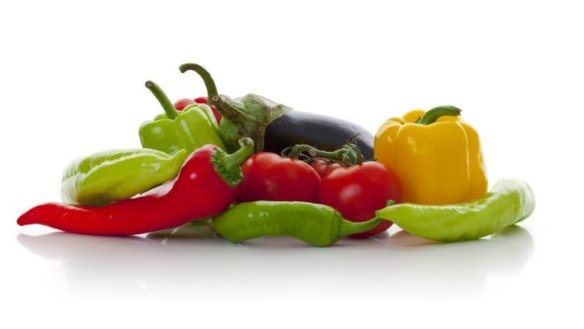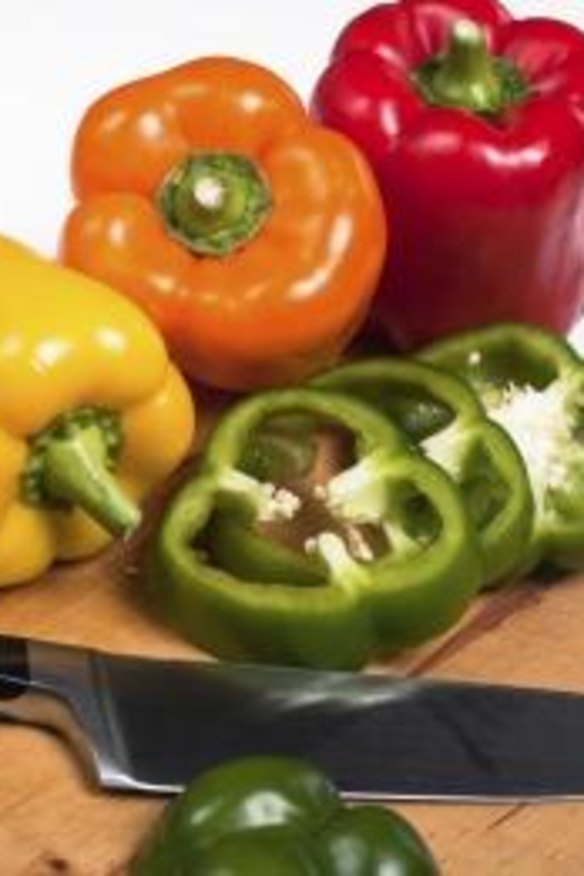How to grow the best capsicums in Canberra region

The delightful capsicum will provide a lot of colour and flavour to much kitchen fare. As well as eating them fresh in salads, they are wonderful when roasted or barbequed, stuffed with rice or meats, or added to stir fry dishes. Christopher Columbus brought seeds back from Central America to the grand sea port of Genoa and from there they spread to all parts of Europe.
Capsicums belong to the same broad family of vegetables (solanum) as tomatoes and potatoes but there are some distinctive differences. They are best eaten soon after harvest before the sugar begins to turn to starch, similar to what occurs with sweet corn. So find a small sunny corner in your garden and space them out with 50-60 cm between each plant.
Capsicums need more warmth than even tomatoes to grow and they take longer to produce a crop. From the seedling in a nursery pot, it will take at least 3 months for capsicums and chillies to produce mature fruit. The green coloured fruit is the immature stage and so if you want full sweetness in a capsicum, wait for the ripe colours to appear. Keep picking the mature fruit regularly and you will enjoy continual production until the colder months set in.

There is a such a good range of capsicums on the market now. Some years ago, it was possible to only buy the sweet Californian Wonder bell capsicum. Other bell shaped varieties include the Golden Calwonder, the Purple Beauty with a lime green interior, the Black Hungarian and the dark brown Sweet Chocolate.
Corno di Toro, the Italian Bulls horn, is a sweet tasting tapered capsicum which can grow to 25 centimetres and turn bright red or yellow when fully ripe. Marconi Red is an Italian heirloom variety with a mild, sweet flavour. It is very prolific and produces long, slender capsicums with medium thick flesh. It is excellent when eaten fresh in salads and can be stuffed, fried or made into delicious salsa.
The most suitable place for growing capsicums in highland areas, such as Canberra, is a north facing sunny spot. Given the essential need for warmth when the bush is growing, I would recommend that you grow them up through the various pot sizes, until early December. The outside night temperatures for Canberra are just too low until then to achieve good growth rates. By keeping these plants in a warm location overnight, you will prevent the impact of overnight heat loss.

Capsicum plants also live much longer than tomato plants. With planning and care over winter, you can pot up your plants in autumn and keep them alive, if they can be kept in a warm, protected location. We have been successful with several fully grown plants this past winter and so we can look forward to an early harvest this summer. Dr Maurice Haddad, of Campbell, has been successful with getting some bushes through to their third growing season.
Chillies differentiate themselves from capsicums with just one compound, capsaicin, within the fruit. Capsaicin produces the heat in chillies and the most intense heat is contained in the seeds and the white ribs (called 'the septae') inside the fruit. The heat ranges between 1 and 10 and is referred to as the Scoville range. The Habanero chilli is at the top end at 10. The Mexican Jalapeno has a rating of 8. The little bush of the Jalapeno grows to only 35-40 cm, so it is one variety that grows well in pots on the balcony. Hungarian yellow wax is a medium heat, long cylindrical variety with good flavour.
Chillies takes more time than capsicums to produce their crop. The intensity of the capsaicin correlates closely with the ripening periods; the hotter the fruit, the longer the period of time for the fruit to mature.
To keep your capsicums growing along well, provide them with a fortnightly watering with a diluted seaweed solution. Do not fertilise with nitrogen based fertilisers or you will just end up with lots of beautiful leaves and very few flowers.
Provide support for capsicum bushes as they begin to carry their crop. Bamboo or thin wooden stakes are sufficient to tie up the branches which can become quite laden with large fruit.
Capsicum and zucchini frittata
1 brown onion
1 green capsicum
1 red capsicum
2 zucchinis
1 tbs grapeseed oil
6 freerange eggs
2 cloves garlic, chopped
12 tbps basil, chopped
50g gms Parmesan cheese, grated
Slice the onion, capsicums and dice the zucchinis. Heat the oil and saute the onion until translucent. Add the capsicums and zucchini and fry lightly, then set the pan aside.
Beat the eggs lightly and mix in the herbs. Season well. Pour the mixture over the vegetables and cook over a low heat until it begins to set. Sprinkle the Parmesan onto the top of the frittata and cook under the grill for 4-5 minutes.
This week in the garden
• Plant selected beetroot and carrot varieties, climbing beans, peas and snow peas. Plant out celery and leek seedlings.
• Transplant well developed zucchini and button squash seedlings into your garden beds where you have mixed in lots of compost and organic matter to feed the roots as they grow.
• Prepare garden beds for later plantings of tomatoes and capsicums, ensuring crop rotation and sufficient space for growth.
• Complete the planting of potatoes, allowing plenty of space between rows so that you can keep hilling them up as shoots appear.
• Turn your newly prepared compost heaps, ensuring that there is sufficient moisture to keep the decomposition process moving along.
Owen Pidgeon runs the Loriendale Organic Orchard near Hall.
Restaurant reviews, news and the hottest openings served to your inbox.
Sign up